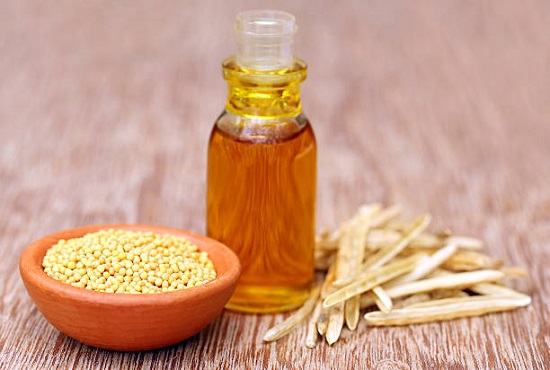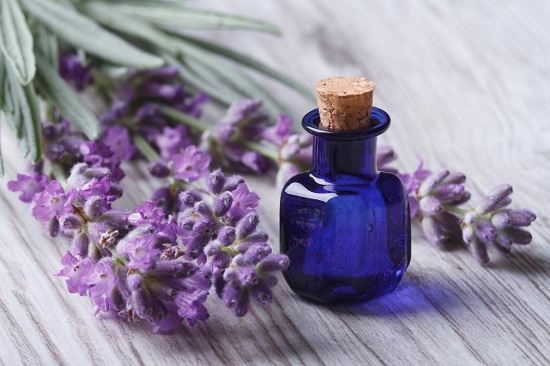Learn which oil to put in the navel and what are the beneficial qualities that you can reap by doing so! Keep reading the article to know more.
Traditional medicine encourages putting oil in the navel. However, with the wide variety of oils available now, there arises a question always- which oil to put in the navel? This article will help you get a better understanding of which oil you could choose to put in the navel and what benefits they’ll give you.
Applying essential oils to the navel
The navel is regarded as the body’s center of balance. It is well supplied with blood vessels, nerves, and pathways to the body’s extremities. The navel also has a very thin layer of muscle separating its skin from the inner vagus nerve. Hence, stimulating navel helps stimulate the vagus nerve. The vagus nerve activates the parasympathetic nervous system, which causes muscles to relax and eases pain and stress.
Ayurveda, the ancient Indian system of medicine, advocates the application of essential oils to the navel, with the belief that the body will absorb these oils through the navel. This is called the Pechoti method, and it involves application of the oil on your navel and massaging of the area for overall health and relief from pain.
How to apply
Wash and pat dry your navel and dilute the essential oil with a carrier oil.. Sit or lie down comfortably and put 1 -2 drops of oil into your navel. Once the skin absorbs the oil, place a clean towel over your navel and press gently on it using both your thumbs. If you feel any pain, gently keep pressing till the pain decreases. Massage the area around your navel for a few minutes till you feel relaxed and pain-free.
Essential oils and their benefits
Essential oils are the aromatic plant compounds extracted from the leaves, flowers, or roots of plants. They are concentrated and potent oils that retain the smell, flavor, and fragrance of the plants they are extracted from.
Commonly, these oils are used in Aromatherapy to promote general well-being, relax the body, and relieve stress. You can also use the oils as a natural remedy for specific ailments but should only be used for topical application and not for ingestion.
1. Neem oil
Neem oil contains fatty acids, antioxidants, and antimicrobial compounds, which are all good for the skin. Research shows that this oil helps fight skin infections, promote wound healing, and fight back skin aging. You can use it to promote skin and hair health. It also helps clear acne and rashes.
2. Ginger oil:
Ginger oil has various chemical compounds such as pinene, camphene, pinene, cineole, linalool, borneol, terpineol, nerol, neral, geraniol, geranial, geranyl acetate, bisabolene, zingiberene. These components help act as an analgesic, anti-emetic, antiseptic, antispasmodic, bactericidal, carminative, cephalic, expectorant, febrifuge, laxative, rubefacient, stimulant, stomachic, sudorific, and tonic. You can use this for nausea and inflammation.
3. Mustard oil:

Mustard oil has about 60% monounsaturated fatty acids (MUFA); 21% polyunsaturated fats(PUFA), and about 12% saturated fats. It gives relief from headaches, promotes eye health, heals cracked lips, and relieves nasal congestion.
4. CBD oil:
Cannabidiol, or CBD, is the derivative of the cannabis Sativa plant; part of the tetrahydrocannabinol, or THC family. One may use it to deal with pain and to relieve stress.
5. Peppermint oil:
The main chemical components of peppermint oil are menthol and menthone. Peppermint oil is known to cure nausea and stomach pain.
6. Tea tree oil
This is an oil of Melaleuca, terpinene-4-ol type, and possesses antibacterial, anti-inflammatory, antiviral, and antifungal properties. You can use it for soothing skin irritation, fighting infections, and also to reduce inflammation.
7. A mixture of Ginger and Mustard oil:
Mustard oil contains allyl isothiocyanate, a chemical compound that is well known for its effect on pain receptors and its ability to reduce inflammation. Apply this to cure an upset stomach and also relieve nausea and bloating.
8. Castor oil:

It helps fight intestinal inflammation relieves gas and stomach pain and promotes hair growth. It also alleviates muscle aches and the pain caused by arthritis. Warmed castor oil promotes weight loss by boosting metabolism.
9. Olive oil:
Improves skin health, makes bones strong, eases constipation, and relieves menstrual pain when used with ginger oil.
10. Coconut oil:
This oil has antibacterial, antioxidant properties, and increases the good cholesterol levels in the body. Use this for soft glowing skin, burning belly fat, and boosting fertility.
11. Almond oil:
It is famous for its anti-inflammatory, immunity-boosting, and anti-hepatotoxicity effects. Use it to treat dark circles under the eyes.
12. Clove oil:
This oil contains a chemical called eugenol, which acts as an anesthetic and antibacterial agent. It helps relieve toothache and also promotes gum health.
13. Lemon oil:
This is an astringent and detoxifier and helps reduce stress and treat pigmentation. It is a good antioxidant and helps rejuvenate the skin.
14. Clarified butter
Clarified Butter has incredible healing properties and consists of fat-soluble vitamins and has antiviral properties. Use this to gain soft and glowing skin.
15. Lavender oil:

Obtained from the plant Lavandula angustifolia, the oil promotes relaxation and is widely infamous to treat anxiety, fungal infections, allergies, depression, insomnia, eczema, nausea, and menstrual cramps.
16. Eucalyptus oil:
Contains natural anti-inflammatory and antimicrobial properties and helps fight infections.
Precautions
- Sanitize your hands before applying the oil.
- Do a patch test for allergy before using essential oils.
- Use organic, preservative, and fragrance-free oils.
- Do not apply too much pressure on your navel while massaging it.
- Use very small amounts of essential oils and dilute them with carrier oils.
- Dilute essential oils with a carrier oil in the ratio prescribed.

